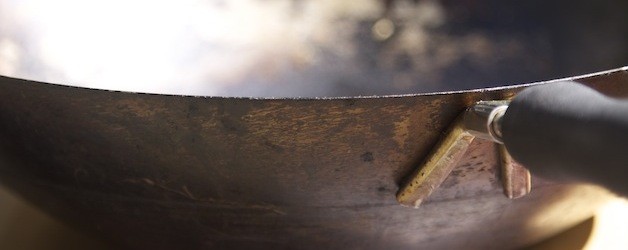

Great Gear Makes All Your Kitchen Tasks Easier
Why to Use a Wok:
A wok is an incredibly versatile cooking tool and can be used for stir frying, deep frying, steaming, roasting, smoking, pan-frying, braising, boiling, and poaching. Woks can be a great partner in preparing healthy meals because it only takes a minimal amount of oil to cook in a wok, and vegetables can be prepared quickly with a lot of flavor and a small amount of fat.
What to Cook in a Wok:
Fast, one-dish dinners of poultry, pork, beef, fish, shellfish, rice, noodles, dumplings, vegetables, and tofu.
Vegetable side dishes: snow peas, spinach, bok choy, watercress, green beans, Chinese broccoli, mushrooms, peppers, eggplant, asparagus, cabbage, bean sprouts (just a few ideas… of course the choices are almost endless).
How to Choose a Wok:
- Carbon Steel is considered the best material for a wok because it conducts heat so well and heats up and cools down quickly. Heavy gauge (14) carbon steel conducts heat evenly and increases durability, protecting the wok from having hot spots and warping.
- A 14-inch Flat bottom wok with a 4-inch depth are the safest and easiest choice for residential stoves (gas or electric).
- A good wok provides steady, even, high heat so stainless steel, nonstick, and electric woks are not recommended because they cannon meet these essential standards.
How to Care for a Wok:
Seasoning a wok and cleaning it after cooking are a small investment in making and maintaining an excellent cooking tool that will last a lifetime. It will be your partner in creating fast and delicious meals for your family – so it’s well worth a few special steps of care.
Seasoning
- Wash the wok well with dish soap, hot water, and a scouring sponge. This is the one time that washing the wok with dish soap is fine because it has not been seasoned yet. After a thorough washing, dry the pan with paper towels.
- Seasoning can be done on a stove top or in an oven by heating the new wok to open the pan’s metal pores to absorb the oil better. There are also classic Chinese recipes for seasoning a wok with herbs and oil. The basic oil method takes about 15-20 minutes and uses a few teaspoons of vegetable oil. The wok is heated and then coated with oil, the oil is wiped out with a paper towel, and the process is repeated until the paper towels are not soiled with leftover factory oil and metal shavings. See “resources” below for a helpful video link.
- Cooking to create a patina. A smooth and silky, non-stick wok will develop over time as a wok is used over and over. A dark brown or black patina is created by the repeated seasoning from the cooking oil. Highly acidic foods and liquid-based cooking should be avoided in the wok until a strong patina is in place.
Cleaning
- Enjoy your steaming hot stir fry or wok-prepared meal and clean your wok after dinner. Let the pan sit and cool, and then clean with warm water and a soft sponge (no dish soap). The patina on a home carbon-steel wok is thin and delicate, so hard bamboo brushes and rough sponges will scratch it off. The pan needs to be completely clean because food will stick to the unclean spots the next time you cook. If you have a particularly tough spot, use a bit of salt with the sponge to gently scrub it off, and then rinse the pan well.
- Once the wok is cleaned, dry it over low heat on the stove, 2 to 3 minutes, or until all of the water is evaporated. A wok will rust if it is left to air dry on a towel or a rack.
- Store the wok in a dry, protected area where the patina won’t get scratched and humidity and dust won’t get into the bowl.
Variation: Cast iron skillets can be substituted for a wok, but woks offer a unique shape and material that create cooking results hard to replicate in other pans. Cast iron skillets work especially well because they cook well at the high temperatures needed in wok recipes, and non-stick frying pans should not be used due to the high temperatures.
Resources:
- One of our favorite cookbooks: A rich resource with recipes and detailed wok history and care information, The Breath of a Wok: Unlocking the Spirit of Chinese Wok Cooking Through Recipes and Lore by Grace Young and Alan Richardson.
- A New York Times article interviewing Grace Young on “Getting the Most from Your Wok.”
- A helpful video on How to Season a Wok by The Wok Shop in San Francisco.
